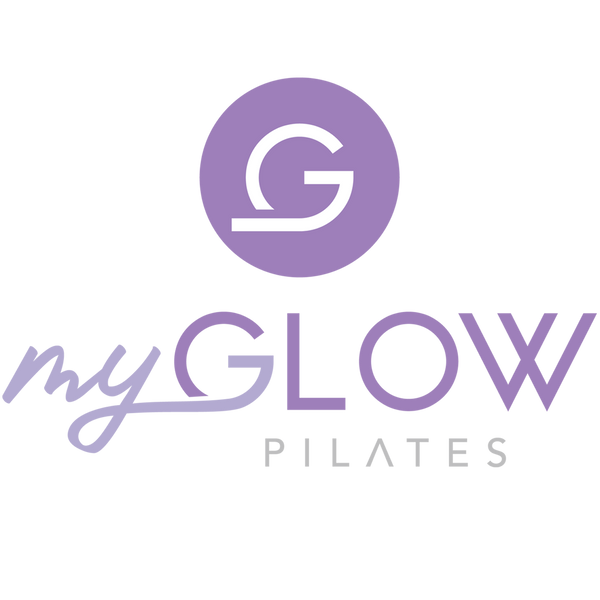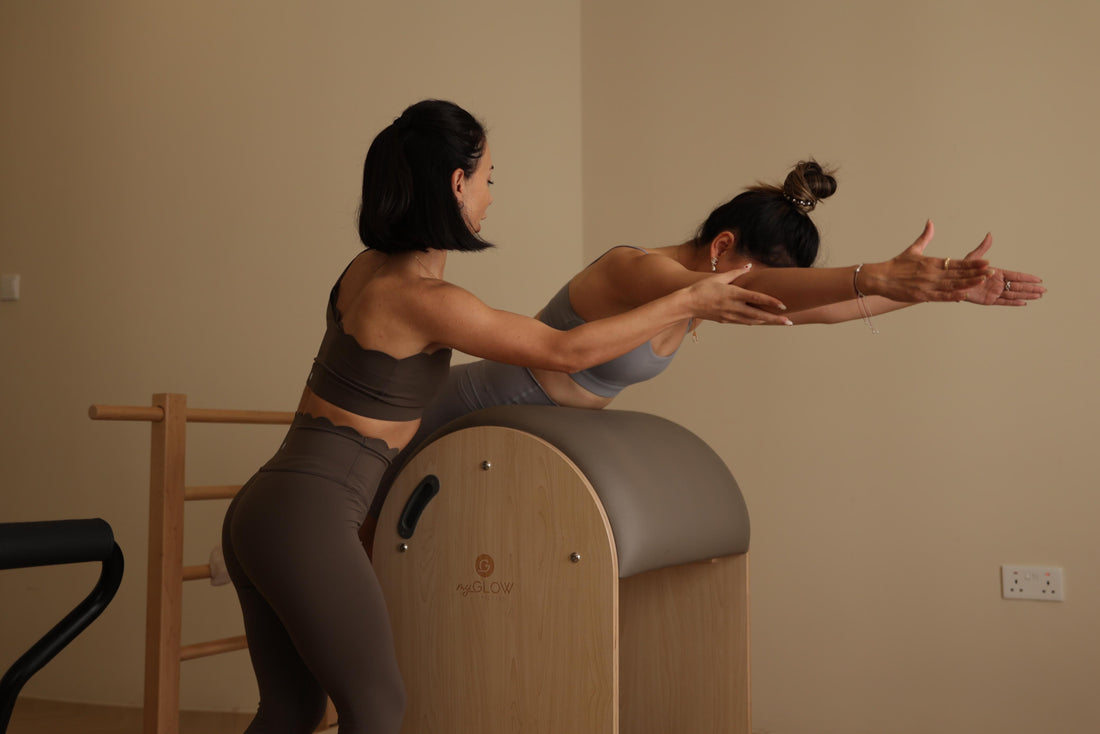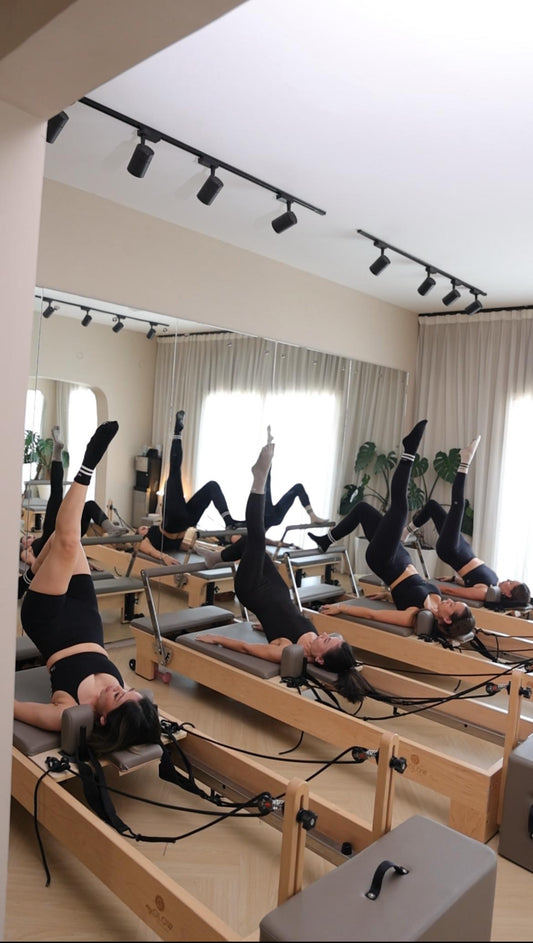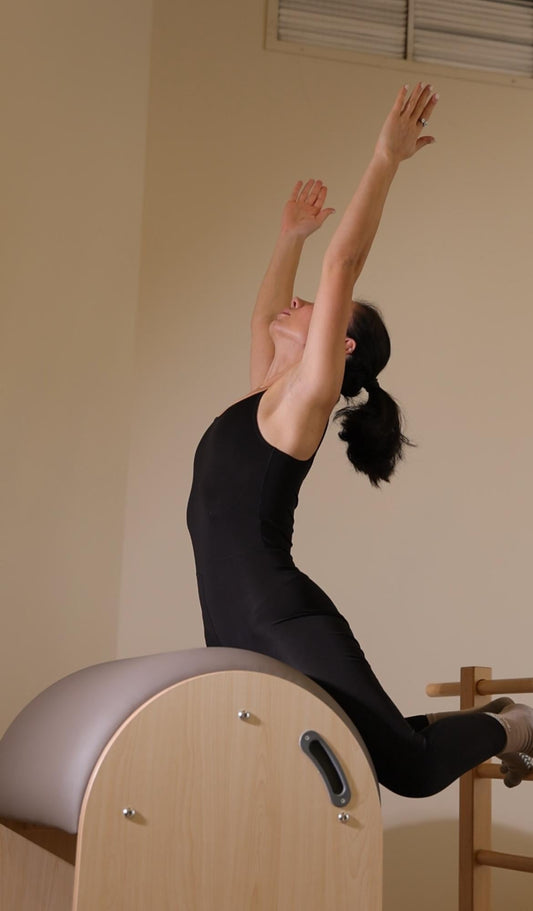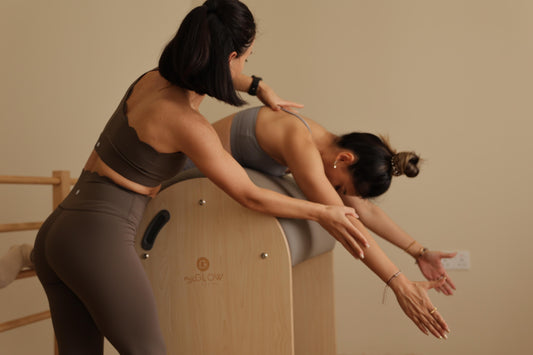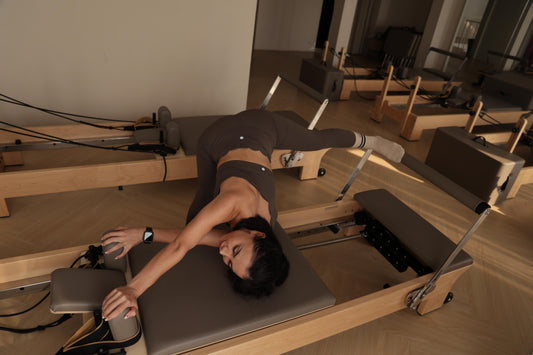Long working hours, uncomfortable seats, and poor habits - these are some major factors that contribute to a bad posture, often resulting in pain and discomfort.
While there are different ways to improve posture, Reformer Pilates has proven to be the perfect solution. Unlike other workouts, Reformer Pilates focuses on controlled, flowing movements that engage the core and improve alignment. It’s low-impact but incredibly effective, and more people are turning to this unique workout method to stand taller, feel stronger, and move better.
Here’s how Reformer Pilates works and why it’s an excellent choice for posture improvement.
Why Posture Matters?
Good posture is about more than just standing up straight; it impacts your balance, flexibility, breathing, and energy levels. Poor posture can lead to back pain, shoulder tension, headaches, and even digestion issues. Research shows that poor posture can increase the risk of back problems by up to 50% in office workers alone. With our daily habits like sitting at desks, looking at screens, and even how we sleep, our posture often takes a hit.
Improving posture isn’t just about looking taller or more confident; it’s about improving your overall quality of life. Better posture can help reduce pain, prevent injuries, and boost energy levels. That’s where Reformer Pilates comes in.
How Reformer Pilates Works on Posture?
In recent years, Reformer Pilates has gained popularity because it’s accessible to people of all fitness levels. Studies have found that Pilates can improve flexibility, muscle endurance, and overall body alignment, all of which contribute to better posture.
That said, take a look at the ways Reformer Pilates can work:
- Strengthens Core Muscles
A strong core is key to good posture. Reformer Pilates exercises emphasize core engagement, which includes not just the abs but also the muscles around the spine. Core muscles support your spine, helping you maintain a straight and stable posture. Unlike regular Pilates, the reformer incorporates resistance, making the exercises more challenging and effective.
- Balances Muscle Strength
Poor posture often results from muscle imbalances, such as weak back muscles or overly tight chest muscles. Reformer Pilates is excellent for rebalancing these muscle groups because the exercises target both sides of the body equally. Movements on the reformer force you to engage muscles evenly, helping prevent slouching or leaning that can throw off alignment.
Many people report noticeable improvements in shoulder, neck, and back pain after just a few weeks of attending Reformer Pilates classes, which is often due to this balance restoration.
- Enhances Flexibility
Flexibility is essential for maintaining good posture. Tight muscles can strain your spine and shoulders, causing poor alignment. Reformer Pilates combines strength and stretching, increasing flexibility in areas that often become tight—like the chest, hips, and hamstrings. Unlike static stretches, reformer exercises allow for controlled movement that extends your range of motion gradually, without strain.
According to a study published in the Journal of Bodywork and Movement Therapies, just 10 sessions of Pilates can significantly improve hamstring and hip flexibility, both of which are key to better posture.
- Promotes Mindful Movement
One of the most overlooked benefits of Reformer Pilates is that it promotes mindfulness. The slow, controlled exercises require concentration and body awareness, which helps you become more aware of your posture in daily life.
Over time, this mindfulness translates into better posture habits in daily life, whether you’re sitting at your desk or walking down the street.
Plus, mindful movement can help reduce stress, which is also linked to tension in the shoulders and neck, a common contributor to poor posture.
How Soon Can You See Results?
Results from Reformer Pilates can vary, but many people notice posture improvements within four to six weeks. Regular practice, even just twice a week, can yield noticeable changes in muscle tone, flexibility, and core strength, all of which support better posture.
In a 2019 study, participants who practiced Pilates twice a week for eight weeks reported improved posture, reduced back pain, and greater flexibility. Since Reformer Pilates uses resistance, it can deliver faster results compared to mat Pilates or other low-impact exercises.
Tips for Getting the Most Out of Reformer Pilates
- Focus on Form, Not Speed
In Pilates, form is everything. Moving slowly and with control ensures you’re targeting the correct muscles. Don’t rush through the exercises; instead, focus on feeling each movement. This is essential for building the right posture-supporting muscles.
- Stay Consistent
Like any exercise program, consistency is key. Aim for at least two sessions a week to see noticeable improvements in your posture.
- Engage Your Core at All Times
During each exercise, think about pulling your belly button toward your spine. This core engagement is what helps support your posture both on and off the reformer.
- Pay Attention to Your Body
While Reformer Pilates should be challenging, it should never feel painful. Listen to your body and adjust movements as needed. Working within your comfort range will help prevent injury and encourage steady improvement.
Is Reformer Pilates Right for You?
Reformer Pilates is accessible to people of all fitness levels. If you’re looking to improve your posture and gain strength without high-impact exercises, it’s a fantastic option. Many reformer classes are beginner-friendly, and you can often work with a Reformer Pilates instructor to adjust exercises to meet your specific needs.
Whether you have years of bad posture to correct or simply want to improve your body alignment, Reformer Pilates offers a path to a stronger, healthier body.
Final Thoughts
Improving posture takes time, but with Reformer Pilates, you’re not only enhancing your appearance but also building a stronger core, better balance, and greater flexibility. With regular practice, Reformer Pilates can help you stand taller, feel better, and stay injury-free. So if you’re ready to take control of your posture, the reformer could be your new best friend.
Give it a try, and watch your posture and confidence improve with each session.
